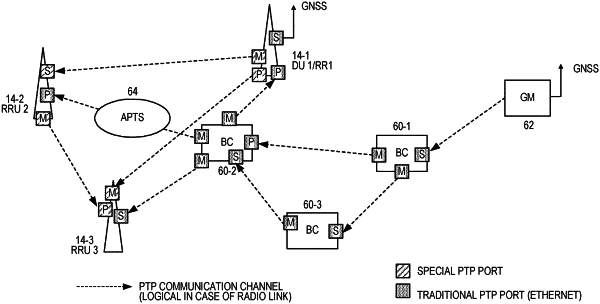| CPC H04W 56/0015 (2013.01) [H04W 72/541 (2023.01)] | 17 Claims |

|
1. A method of automating radio-interface based synchronization (RIBS) at a radio network node in a Radio Access Network (RAN) of a wireless communication network, the method comprising:
receiving, via first communication interface circuitry, over-the-air (OTA) synchronization signals from each of two or more neighboring radio network nodes, wherein the OTA synchronization signals transmitted by each neighboring radio network node have a discernable signal timing tied to a node clock of the neighboring radio network node;
receiving, via second communication interface circuitry, clock-attribute information for the two or more neighboring radio network nodes, the clock-attribute information for a given neighboring radio network node indicating one or more clock attributes for a clock used by the given neighboring radio network node for its timing;
evaluating reception qualities of the respective OTA synchronization signals together with the corresponding clock-attribute information, to identify a preferred synchronization source for the radio network node; and
synchronizing a clock used by the radio network node for its timing with the preferred synchronization source; and
wherein the radio network node receives the clock-attribute information in announcement messages sent according to the IEEE 1588 Precision Time Protocol (PTP), and wherein the OTA synchronization signals are treated as special port signals substituting for IEEE 1588 synchronization messages.
|